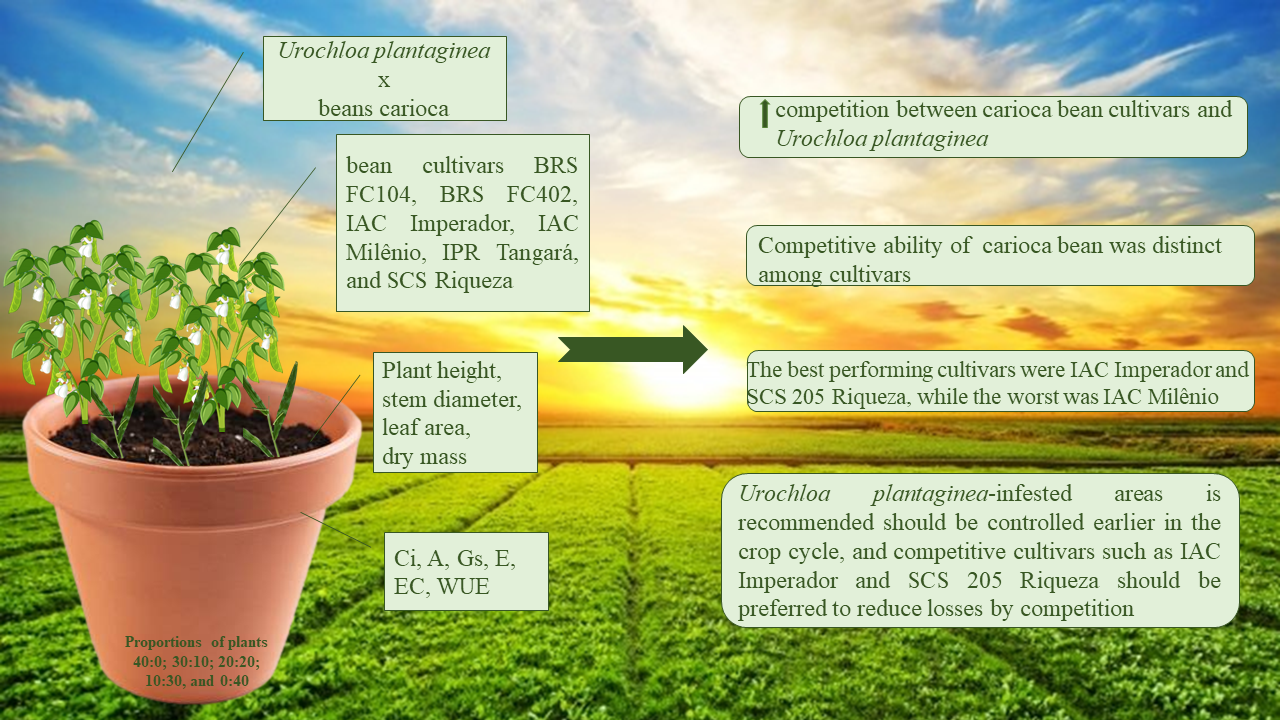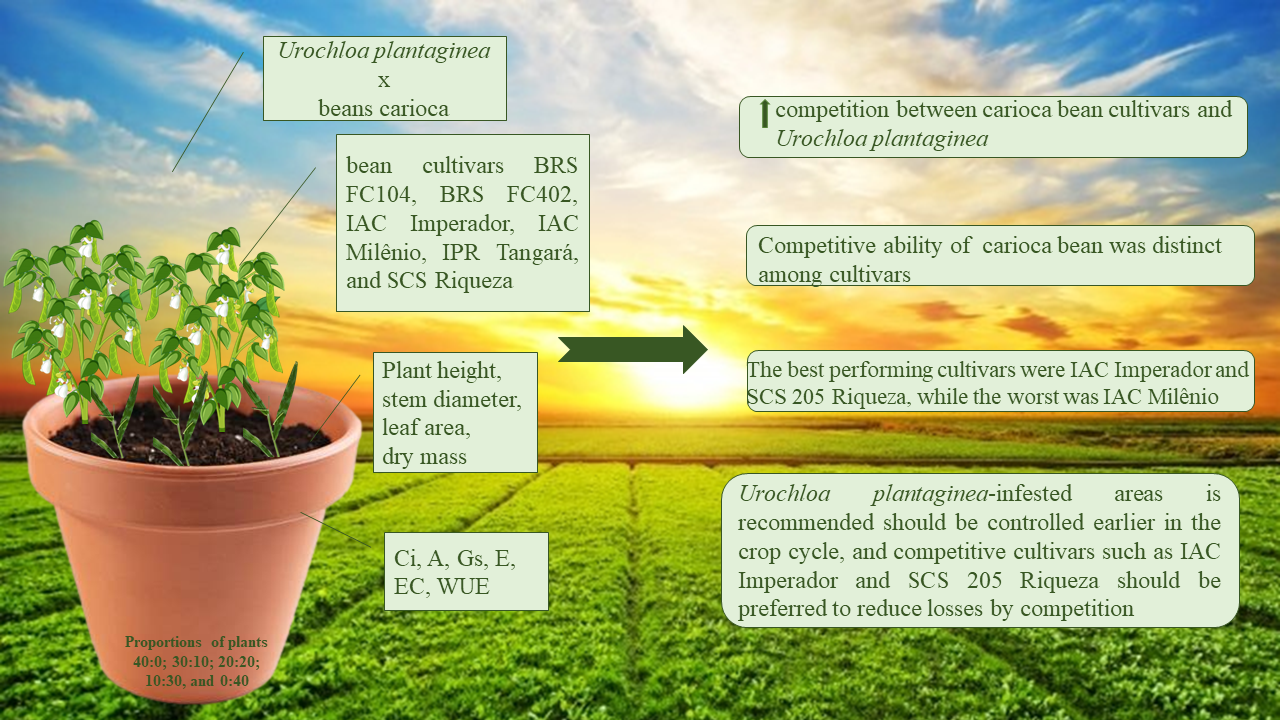Competitive ability of bean cultivars with Urochloa plantaginea
DOI:
https://doi.org/10.48162/rev.39.071Palabras clave:
Phaseolus vulgaris, ecofisiología de malezas, interacción, serie de reemplazoResumen
 The objective of this work was to evaluate the competitive ability of carioca bean cultivars BRS FC104, BRS FC402, IAC Imperador, IAC Milênio, IPR Tangará, and SCS Riqueza in the presence of Alexandergrass (Urochloa plantaginea) in different proportions of plants in association. The experiments were carried out in a greenhouse in a completely randomized design with four replications. The treatments were arranged according to the proportions of beans and Alexandergrass plants: 100:0, 75:25, 50:50, 25:75, and 0:100 or 40:00, 30:10, 20:20, 10:30, and 0:40 plants per pot. The competitiveness of the species was analyzed using diagrams applied to replacement experiments and also through relative competitiveness indices. At 30 days after crop emergence, leaf area (LA), height (HP), diameter (DP), and shoot dry mass (SM) of the plant shoots were measured, as well as variables related to the physiology of the species. There was competition among carioca bean cultivars in the presence of Alexandergrass regardless of the proportion of plants, causing decreases in DP, LA and SM. Basically, there is competition for the same environmental resources between beans and Alexandergrass.
The objective of this work was to evaluate the competitive ability of carioca bean cultivars BRS FC104, BRS FC402, IAC Imperador, IAC Milênio, IPR Tangará, and SCS Riqueza in the presence of Alexandergrass (Urochloa plantaginea) in different proportions of plants in association. The experiments were carried out in a greenhouse in a completely randomized design with four replications. The treatments were arranged according to the proportions of beans and Alexandergrass plants: 100:0, 75:25, 50:50, 25:75, and 0:100 or 40:00, 30:10, 20:20, 10:30, and 0:40 plants per pot. The competitiveness of the species was analyzed using diagrams applied to replacement experiments and also through relative competitiveness indices. At 30 days after crop emergence, leaf area (LA), height (HP), diameter (DP), and shoot dry mass (SM) of the plant shoots were measured, as well as variables related to the physiology of the species. There was competition among carioca bean cultivars in the presence of Alexandergrass regardless of the proportion of plants, causing decreases in DP, LA and SM. Basically, there is competition for the same environmental resources between beans and Alexandergrass.
Highlights:
- There is competition between bean and Alexandergrass, for the same environmental resources;
- There is varietal difference - IAC Imperador and SCS 205 Riqueza are the most competitive ones;
- The escape to competition is the best approach to guarantee yield in Alexandergrass-infested fields.
Descargas

Descargas
Publicado
Cómo citar
Número
Sección
Licencia
Derechos de autor 2018 Revista de la Facultad de Ciencias Agrarias UNCuyo

Esta obra está bajo una licencia internacional Creative Commons Reconocimiento-NoComercial-CompartirIgual 3.0.
Aquellos autores/as que tengan publicaciones con esta revista, aceptan las Políticas Editoriales.










.jpg)




